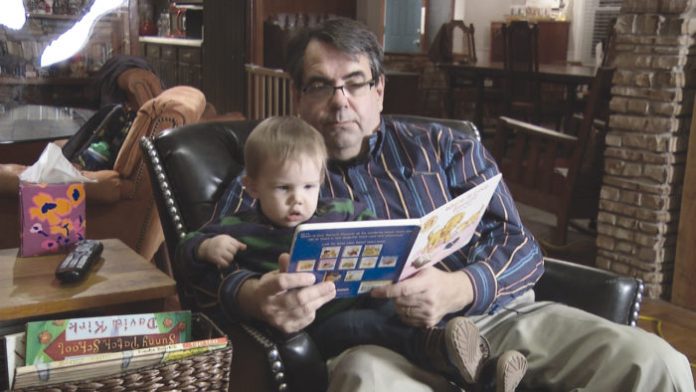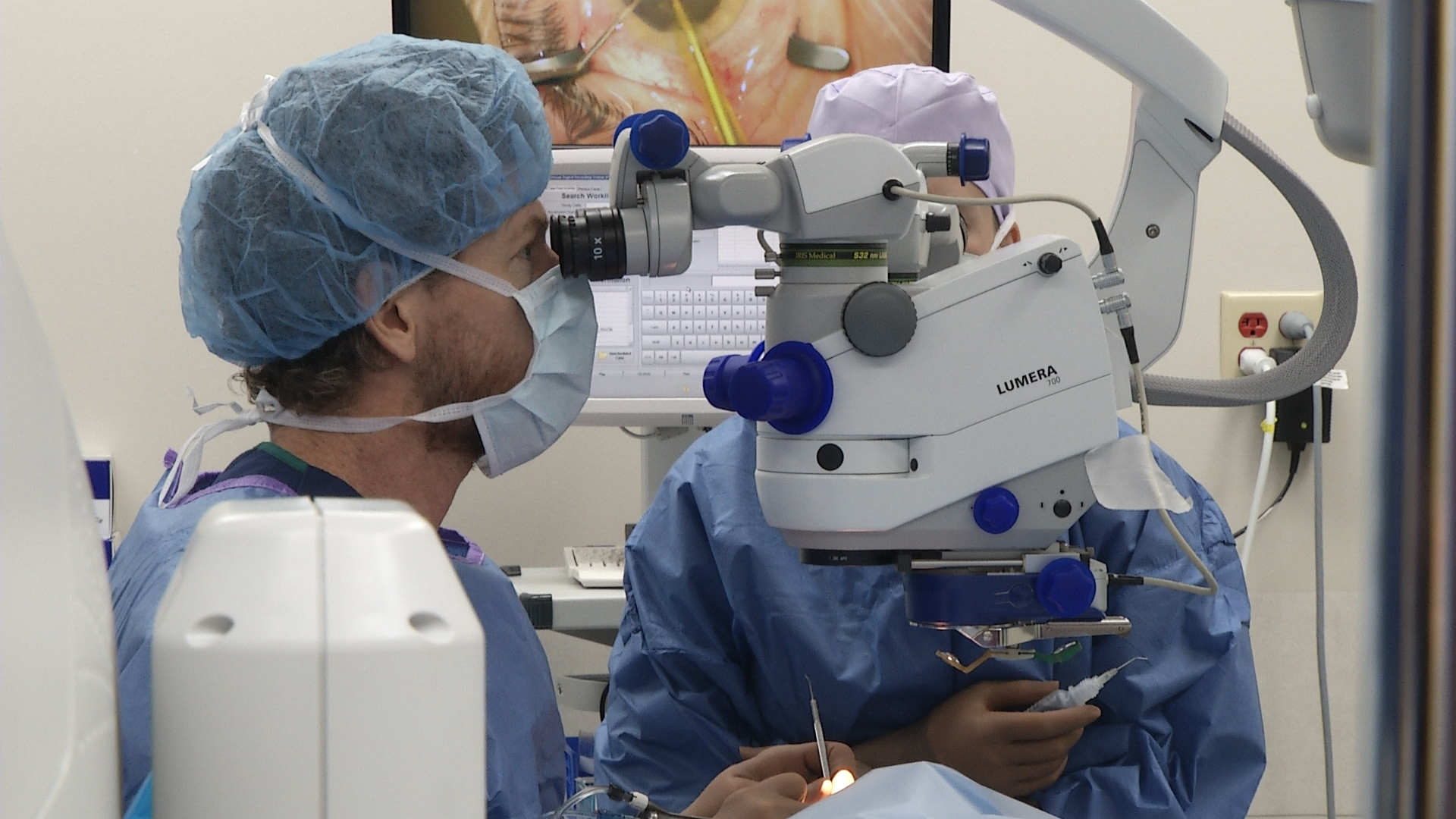

You’ve heard of a two-for-one sale, but what about a two-for-one eye surgery?
It takes critical coordination and two skilled surgeons, but doctors at Dean McGee Eye Institute are combining cataract and retina surgeries into one combined procedure. It’s an approach that is easier on the patient, more cost effective and can improve outcomes, too. In the end, it is helping restore patients’ vision so that they can more quickly get back to the things in life they love most. For Ed Brandt III, that was reading to his grandkids.
“My four-year-old granddaughter was over, and we were sitting in the back. She brought a book over, sat in my lap and said, ‘Grampy, can you read this for me?’ I opened the book and I just couldn’t read it,” Brandt said.
A trip to the Dean McGee Eye Institute revealed why. Brandt had a detached retina.
“If you think of the eye like a camera, your lens is the lens of the camera and the retina is kind of like the film,” said Dr. Vinay Shah, a retina specialist with Dean McGee. “When you have a retinal detachment that means the film of the camera has come loose and we have to put it back in place surgically.”
For Brandt, who had undergone procedures on his eyes before, that might have meant another three surgeries; the first to re-attach the retina and place a tiny oil bubble to hold the retina in place while it heals; a second surgery to remove the oil bubble; and then, since it is common for a cataract to form after retina surgery, he would need a third surgery to address that issue. Brandt was pleased to learn that two of those surgeries could be combined into one. Not only was it more convenient for him, but he also learned that the procedure could enhance his overall outcome.
“A large percentage of patients who have retina surgery will develop a cataract. So six months later, they are looking at surgery again. So if we can go ahead and take out the natural lens, replacing it with an implant lens and do the retina surgery at the same time, it is much easier on the patient and his or her family,” said Dr. Ralph Hester, a cataract surgeon with Dean McGee. “More importantly, though, the retina surgeon wants the clearest possible view to visualize the finer details of the retina.”
“The retina is a less-than-one-millimeter-thin membrane in the back of your eye. So to work on that, you want optimal visibility,” Shah explained.
Accomplishing the combined cataract-retina surgery requires a lot of coordination. Two surgeons and their teams as well as two sets of surgical equipment must all be in place.
“The patient does not move. We move,” Shah said. “So it has to be carefully orchestrated. At the Dean McGee Eye Institute, we have set aside particular times of the week just for these types of combination procedures.”
With one trip to the operating room, patient safety is improved and there also are cost savings with the added bonus of less time away from work.
“It’s not about the money, though. It’s about the patient,” Hester explained. “For the patient, this is a big deal. If you can package this into one operation, they are not scheduling time off work multiple times and getting their loved ones to transport them to and from the surgery center multiple times. It makes a big difference.”
Ultimately, Hester and Shah added, it is about changing somebody’s life, restoring their vision and helping them get back to the things they love doing most, like reading to grandchildren.
“There are Braille books and audio books, but there is no way that I could ever replace having a grandchild sitting in my lap and being able to read to him or her. I can do that now. I can see, and I can read. It makes a world of difference to me,” Brandt said.
To learn more about the combination cataract-retina surgery, visit www.DMEI.org













